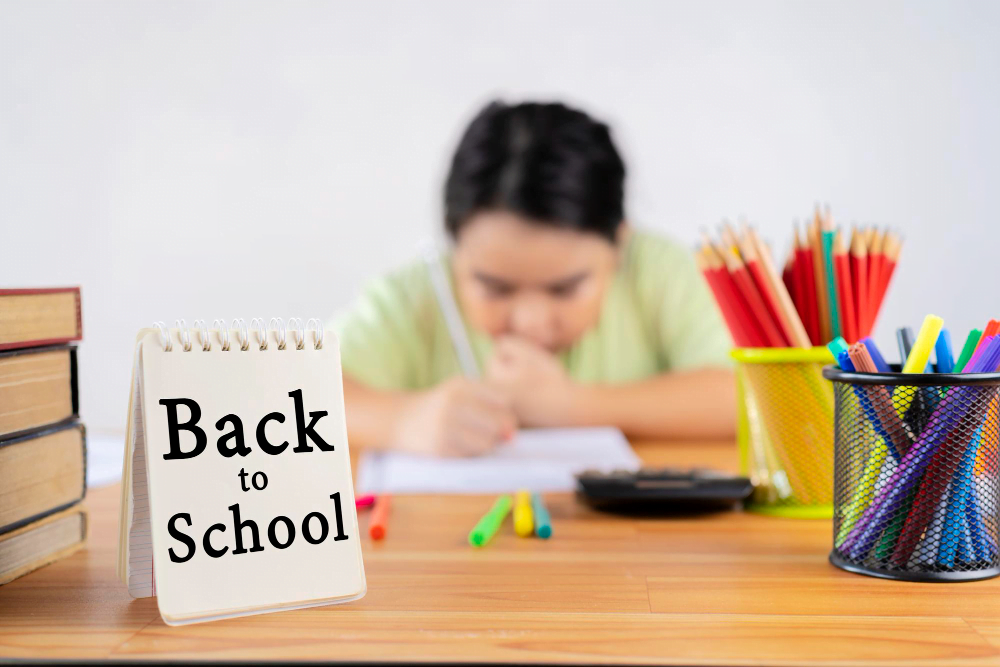Back-to-school anxiety is a common experience for many children and adolescents as they anticipate the start of a new school year. This period can be filled with excitement but also apprehension and fear about the unknown, making it a critical time for support and understanding.
Addressing back-to-school anxiety effectively can set the tone for a successful and positive school year ahead. This blog aims to provide parents and caregivers with five strategic approaches to help their children navigate this challenging period.
1. Identifying the Signs of Back-to-School Anxiety

Recognizing the signs of back-to-school anxiety is the first step in providing the necessary support to your child. Anxiety can manifest in various ways, including but not limited to:
- Physical symptoms: Such as stomach aches, headaches, or changes in appetite.
- Behavioral changes: Increased irritability, mood swings, or clinginess are common.
- Emotional expressions: Expressing worries about school, fear of attending school, or showing reluctance to discuss school-related topics.
- Sleep disturbances: Trouble falling asleep or frequent awakenings, often due to worries about school.
- Avoidance behaviors: Refusing to attend school or trying to avoid school-related activities.
Understanding these signs will enable parents to intervene early and address their child’s anxiety before it escalates.
Understanding Your Child’s Anxiety
Anxiety in children is not always easy to detect as it can be mistaken for shyness or a temporary phase. However, understanding your child’s anxiety involves taking notice of subtle changes in behavior, particularly as the school year approaches. Listen actively to your child’s worries and fears, acknowledging their feelings without dismissing them. It’s crucial to validate their emotions and let them know it’s okay to feel anxious. Engaging in open conversations about their feelings regarding school can reveal underlying issues that may be contributing to their anxiety.
2. Establishing a Supportive Routine Before the School Year Starts

A predictable and supportive routine can significantly alleviate back-to-school anxiety. A well-structured pre-school routine helps children feel more secure and less anxious about the uncertainties of a new school year. This involves:
- Adjusting to a school-friendly sleep schedule: Gradually transitioning to the school year sleep schedule can help mitigate anxiety related to shock changes.
- Familiarizing with the school environment: If possible, visit the school with your child a few times before the year starts, especially if it’s a new school. Familiarity breeds comfort.
- Setting up a morning and evening routine: Establish a calm and efficient morning routine and a relaxing evening routine to reduce stress and anxiety.
By cultivating a sense of normalcy and predictability through routines, children can approach the school year with more confidence and less fear.
Creating a Safe and Predictable Environment
Creating a safe and predictable environment at home plays a critical role in managing your child’s back-to-school anxiety. This includes:
- Open communication: Ensure your child knows they can talk to you about their fears and anxieties anytime.
- Consistency: Maintain consistent rules and routines within the home to give your child a sense of security and stability.
- Supportive practices: Encourage practices that promote relaxation, such as reading together, spending quiet time, or practicing mindfulness or breathing exercises.
A supportive home environment acts as a safe harbor from which children can venture into the sometimes overwhelming world of school, knowing they have a sanctuary to return to.
3. Open Communication: Talking About Fears and Expectations

Open communication about fears and expectations surrounding the school year is vital. This dialogue can help children express their anxieties and develop coping strategies to manage them. Parents should:
- Initiate conversations: Start discussions about school proactively, allowing your child to share their thoughts and feelings.
- Normalize anxiety: Acknowledge that feeling anxious about a new school year is normal and share personal stories of overcoming similar feelings.
- Set realistic expectations: Help your child set achievable goals for the school year to avoid feeling overwhelmed.
Through open communication, parents can gain insights into their child’s specific anxieties and work together to address them.
Fostering an Environment of Trust
To effectively talk about fears and expectations, fostering an environment of trust is crucial. This involves:
- Being a good listener: Show that you’re truly listening by maintaining eye contact, nodding, and responding appropriately to your child’s concerns.
- Avoiding judgment: Don’t dismiss or ridicule your child’s fears, even if they seem trivial. What might seem small to an adult can feel insurmountable to a child.
- Offering reassurance: Reassure your child that it’s okay to feel anxious and that you’re there to support them, no matter what challenges come their way.
Creating a trusting environment encourages children to share their deepest worries and fears about going back to school, knowing they will be met with understanding and support.
4. Collaborating with School Staff and Mental Health Professionals

Building a partnership with school staff and potentially involving mental health professionals can provide an additional layer of support for children experiencing back-to-school anxiety. Actions to consider include:
- Meeting with your child’s teacher: Before the school year starts, arrange a meeting to discuss your child’s anxieties and how they might manifest in the classroom.
- Engagement with school counselors: School counselors can be invaluable allies in monitoring your child’s adjustment and offering direct support during the school day.
- Consulting mental health professionals: If anxiety seems severe or persistent, seeking advice from a psychologist or psychiatrist might be necessary. They can offer strategies tailored to your child’s needs.
Leveraging these resources ensures a comprehensive support system is in place to help your child navigate their anxiety effectively.
Building a Support Network for Your Child
Creating a support network involves multiple steps, including:
- Getting involved in the school community: Participation in school events and activities can provide insights into the school environment and foster relationships with the broader educational community.
- Connecting with other parents: Sharing experiences and strategies with other parents can offer additional perspectives and coping mechanisms.
- Empowering your child to build friendships: Encourage your child to engage in social activities and build relationships with peers, which can significantly diminish feelings of isolation and anxiety.
A robust support network not only provides immediate resources for managing anxiety but also instills in your child a sense of belonging and community within the school environment. This can dramatically lessen the anxiety associated with feeling isolated or misunderstood.
5. Encouraging Positive Coping Mechanisms for School Anxiety

Teaching and encouraging positive coping mechanisms is essential for helping children manage back-to-school anxiety. These mechanisms include:
- Problem-solving skills: Guide your child through the process of identifying problems and brainstorming potential solutions. This empowers them to tackle issues independently.
- Stress management techniques: Teach children strategies like deep breathing, visualization, or mindfulness to help them calm down when they feel overwhelmed.
- Positive self-talk: Encourage your child to replace negative thoughts with positive affirmations, building their self-esteem and reducing anxiety.
By incorporating these coping mechanisms, children can gain control over their anxiety, transforming it from an overwhelming force into a manageable aspect of their school experience.
Equipping Your Child with Tools to Manage Anxiety
To effectively equip your child with the tools to manage anxiety, consider implementing the following strategies:
- Modeling healthy coping strategies: Demonstrate how you manage stress and anxiety in your own life, showing your child that it’s possible to overcome such feelings.
- Encouraging routine physical activity: Engage in regular physical activity as a family. Exercise is a powerful stress reducer and can help mitigate anxiety symptoms.
- Creating a supportive family environment: Emphasize open communication, mutual support, and understanding within the family unit, reinforcing your child’s confidence to face school-related challenges.
Providing children with a variety of tools and strategies to manage anxiety not only helps them in the context of school but also equips them with valuable life skills for dealing with future challenges.
Final Thoughts
Overcoming back-to-school anxiety is a journey that involves patience, understanding, and proactive support from parents and caregivers. By identifying the signs of anxiety early, establishing supportive routines, maintaining open communication, collaborating with educational and mental health professionals, and teaching effective coping mechanisms, families can significantly reduce the impact of back-to-school anxiety. Remember, the goal is not to eliminate anxiety but to manage it effectively, empowering your child to embrace the school year with confidence and resilience. With these strategies in place, you can help your child navigate the challenges of returning to school, laying the groundwork for a fulfilling and successful academic experience.



